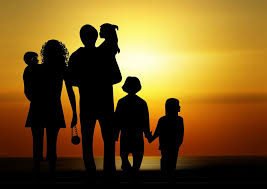Family institution Importance and Functions
The functions of a family institution itself tell us how much relevance it has to one’s life and how important they are. The main function of the family is considered as the continuation of the human race which is through giving birth and properly nurturing and caring for the child beside this a family as helps fulfill sexual needs and also provide a sense of commitment and sexual fidelity to the partner whom they’re married to.

The relationship between marriage institution and family institution and their interdependencies.
Both the institutions of marriage and family are very closely related as marriage is generally considered a pre-requisite to having a family and having a mating relationship. Taking this into consideration it is necessary to understand that since these institutions complement each other so do their functions. Both institutions serve common functions of the creation of a mating relationship, providing a habitation and procreating and raising children. That is both the marriage can be considered as a link between the ‘family of orientation’ and the ‘family of procreation’ making them very closely related.
The functions of the family institution can be bifurcated into various groups on the basis of importance, implication, and usage
Out of these generally, the most prominently used bifurcation of the functions is according to their importance so on the basis of this they are divided into
- Essential functions
- Non-essential functions
Essential functions:
- Satisfaction of sex needs: proper satisfaction of sex needs brings about a desire for lifelong partnership among males and females. This helps in increasing the stability of the family.
- Production and rearing of a child: one of the most important and prominent functions of a family is procreation and sustenance. Hence one of the main functions of the family is reproduction and rearing of kids.
- Provision of home and minimum basic facilities: it is the responsibility of the head of the family to provide minimum basic facilities to the family. For example, food, shelter, clothing, etc.
- Giving love and sympathy: one of the basic functions of a family and its members is to provide love and support to all the other members of the family. To be sympathetic in times of need and console each other in times of grief.
- Socialization: the main function of a family is socialization. The family helps transit the moral ideas of the group to the members of the family. This is done through language or through action.
Non-essential functions:
- Economic functions: family serves as an economic unit. The family also looks after family property. The head of the family controls the property. He also looks after the needs of the family members i.e. whatever a man earns is consumed by his family.
- Religious functions: the family is the center for religious training of the children who learn from their parents all about religious virtues. Various virtues like Idol worship and Pooja are taught to a child. Also, knowledge about various religious scriptures is passed on to the children. This function also helps them to become more of a part of the religious society and appreciate religion and life.
- Educative function: every newborn child is born into a family and hence the family becomes the first school for him/her. It also provides him with basic knowledge about life, people, behavior etc. which is like a base for him/her are they enter the world of education in schools etc.
- Social, cultural and recreational functions: the family that a person is born into decides his/her social status and functions. A family exercises social control over the individual and helps him abide by the social norms and morals it also helps him abstain from performing various anti-social activities.
It also helps maintain one’s cultural background and help carry down one’s culture down to the future generations.
A family also provides recreation to the members of the family like having various get-togethers and functions which are a form of recreation. For example, a religious ceremony like ‘Durga Pooja’ and ‘Garba’ may not be recreational but when the entire family is involved in the joyous activity of ‘Garba’ and ‘Dandya’, it is a recreational activity.
We believe in sharing knowledge with everyone and making a positive change in society through our work and contributions. If you are interested in joining us, please check our ‘About’ page for more information
